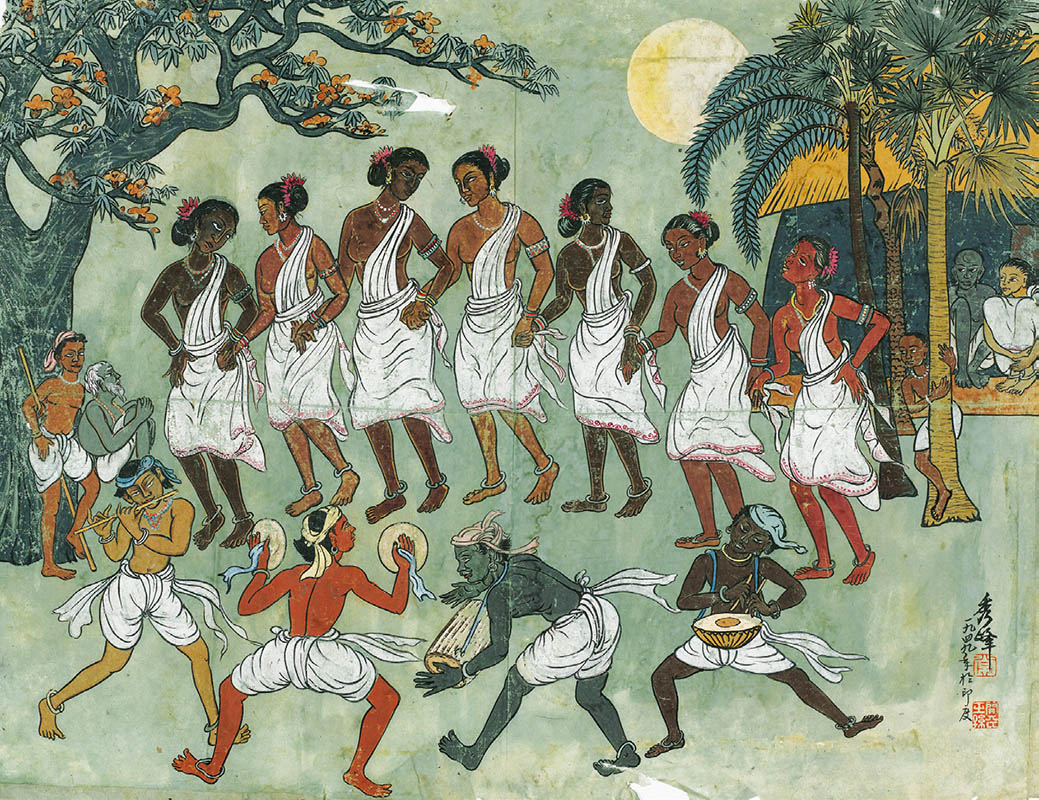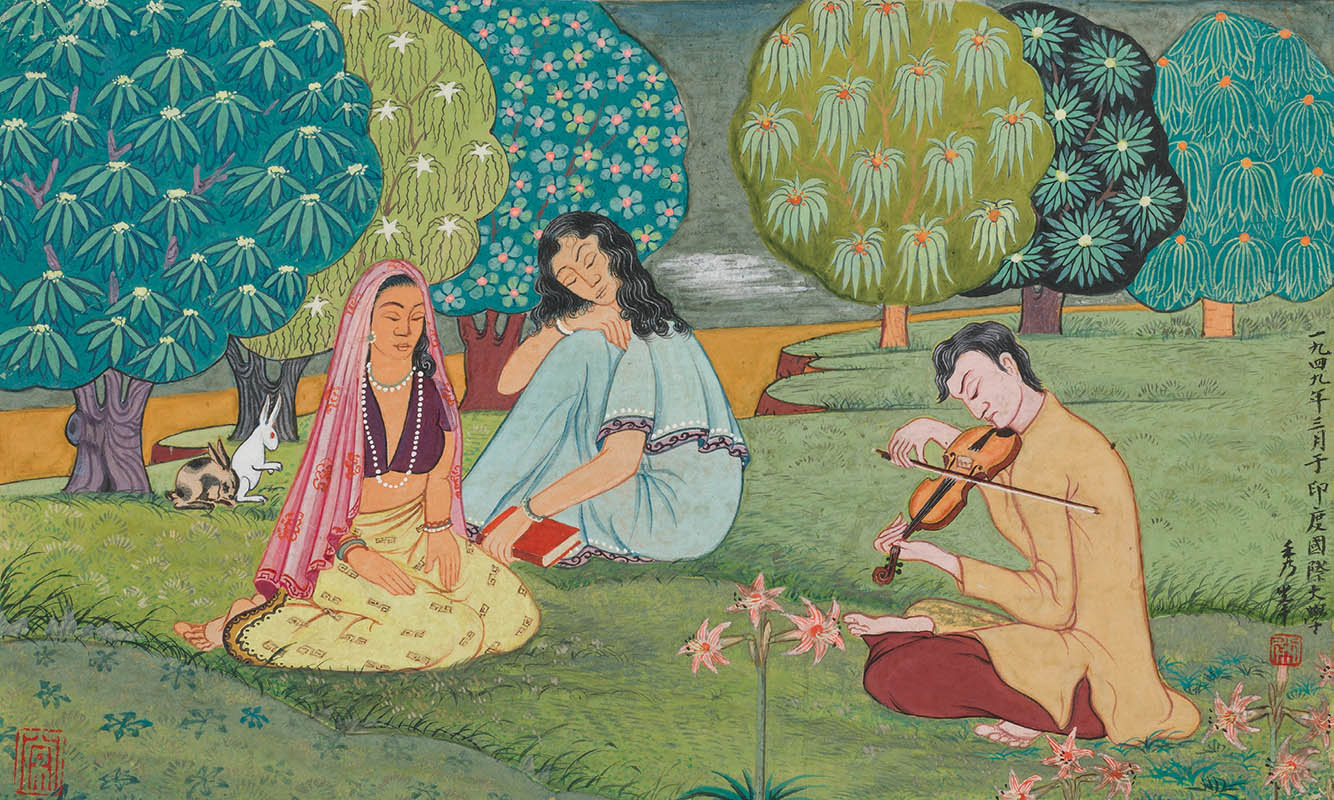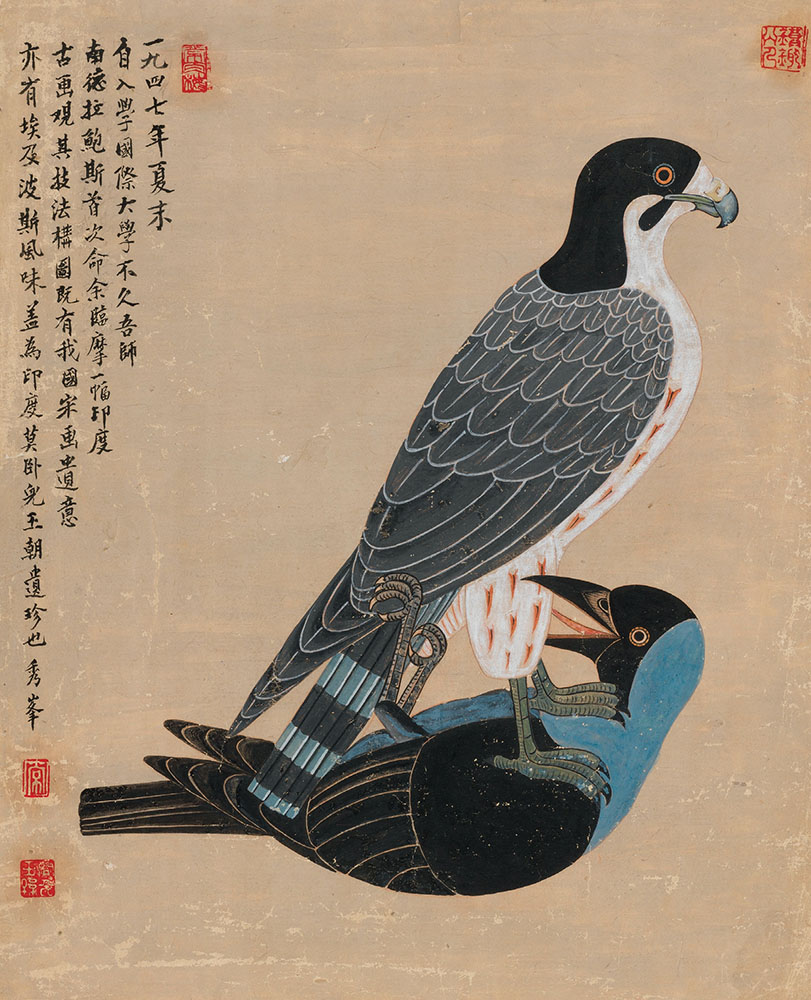Land of peace. Chang Xiufeng’s decades-old paintings trace India–China links
On a cold day in November 2019, I visited Peking University to look at an exhibition of paintings by Chang Xiufeng (1915-2010). As the first Chinese artist to travel abroad for long-stay study, Chang moved to India in 1947 to attend the art school in Shantiniketan in West Bengal, where he studied under the famous Indian artist Nandalal Bose.
Chang remained in India for 14 years, until he was deported in 1961 after being imprisoned in Darjeeling under the suspicion of being a communist agent. His life in India was an example of the vibrant artistic exchanges that took place between India and China throughout the 1930s-40s. While at Peking University, I met Chang’s daughter-in-law Wang Yizhu, the curator of the exhibition, who had meticulously put together a collection of his paintings that beautifully captured Bengali everyday life. (figs. 6 and 7) In an article I wrote in The Indian Express, I quoted Wang Yizhu: “It was very difficult to go to India at the time. There were many Chinese people who had emigrated and were living in India at the time. Chang Xiufeng pretended he wanted to work as a teacher in a Chinese Middle School in Kolkata, so that his visa would get approved.” Guided by the famous painter, Xu Beihong, Chang went to India as a 32-year-old to attend the art school in Shantiniketan. “At the time, the university had Chinese students and teachers, but most were studying literature and Buddhism. No one studied art,” said Wang.

Fig.6: Chang Xiufeng, Indian Dance, collected by Chang Zheng and Wang Yizhu.

Fig.7: Chang Xiufeng, Friends, collected by Chang Zheng and Wang Yizhu.
With 2020 marking the 70th anniversary of diplomatic ties between the two countries, a glimpse into Chang’s life in India through his paintings, was an eye-opener for how life once was for artists from across the border. The exhibition, titled ‘Land of Peace’, traces cultural and artistic exchanges between the two countries, highlighting Chang’s paintings and his uncle and scholar Chang Renxia’s writings from his visit to India. At the exhibition, I also interacted with Tansen Sen, a professor of history at New York University Shanghai, who has spent years researching Chang’s life. He told me that it was important to focus on people who have been forgotten in the telling of the India-China story. To him, Chang Xiufeng was a great example of such a person. Unlike other artists, Chang was more involved in replicating the Indian school of art, learning from Indian paintings and incorporating it into his own work. (Fig. 8)

Fig.8 (right): Chang Xiufeng, Copy of Ancient Indian Painting, collected by Chang Zheng and Wang Yizhu.
Barely two months later, in early January, I met Professor Sen and Wang Yizhu once more, but this time across the border in India in the Aurobindo Ashram in Puducherry. I joined them on a hot Saturday afternoon for a few hours to parse hundreds of paintings left behind by philosopher and Indologist Hu Hsu (1909-2000, also known as Xu Fancheng), who lived at the ashram for nearly three decades. He spent a lot of his time translating several of India’s classical Sanskrit texts into Mandarin. During his time in India, he had translated the Bhagavad Gita, the Upanishads and several of Sri Aurobindo’s works.
While Professor Sen’s quest was to highlight little-known artistic interactions that took place between the two countries, as a reporter, I was intrigued by these journeys across the border prior to the 1962 Sino-Indian War, which has in many ways come to define the two countries’ relationship with each other. I received a wide range of comments to the stories I filed, largely from readers telling me that they really had no idea that such exchanges had even taken place. In fact, the consistent feedback I received for most of my reports was that these were interesting stories about Chinese people, who were largely unknown in India. My reporting on Chang and Hu was instrumental in opening my eyes to a whole new world of stories that could define the way the two countries view each other. Especially in the 70th year of diplomatic ties, this seems worth pondering over.
Sowmiya Ashok, former assistant editor at The Indian Express, now an independent journalist based in Chennai, India.